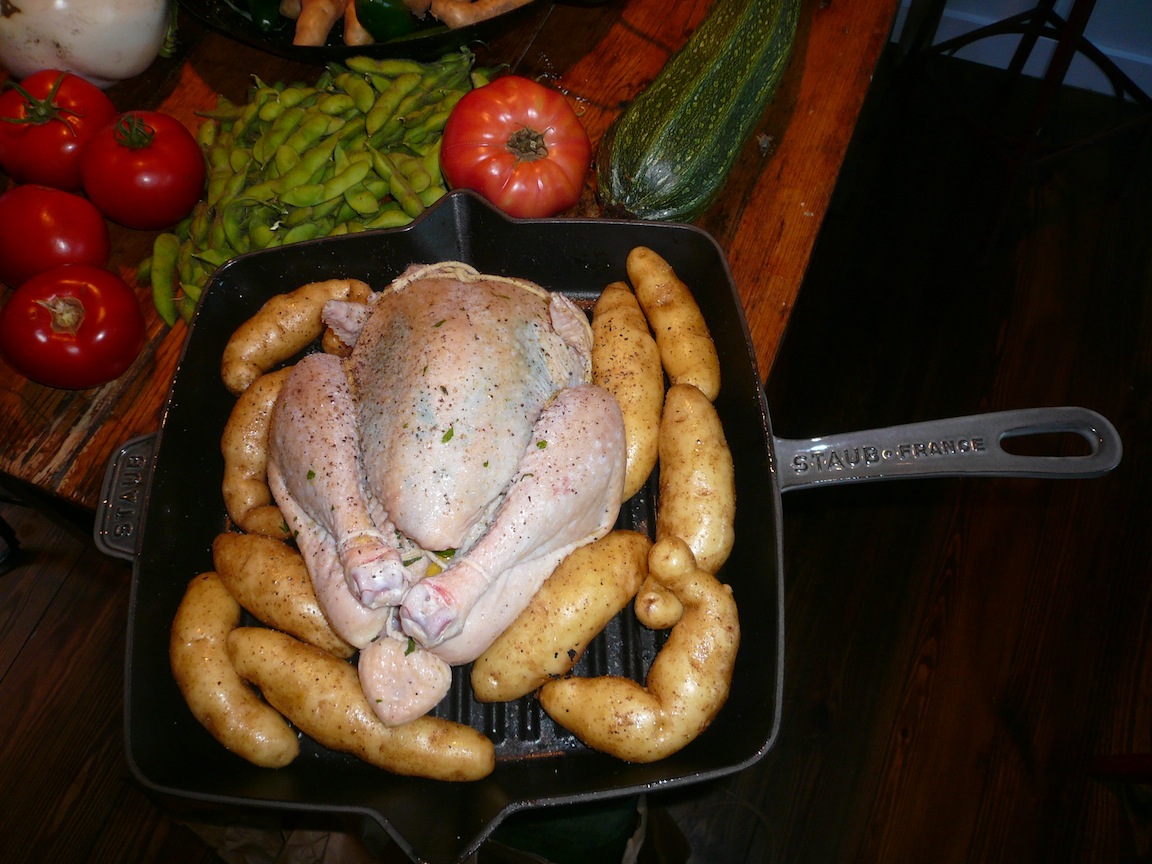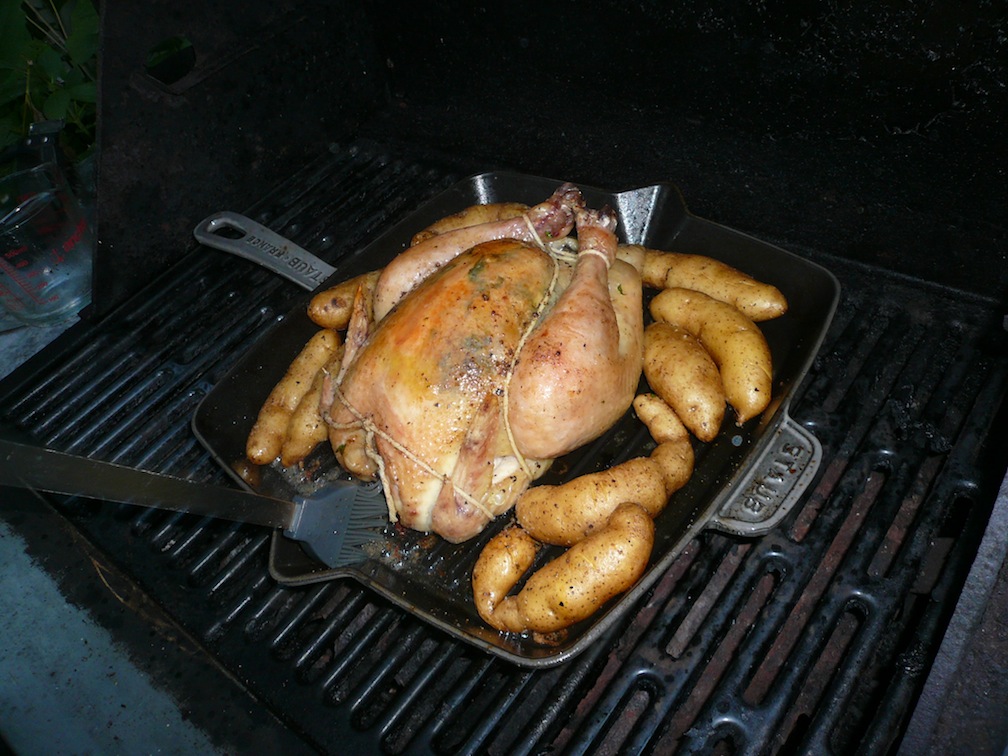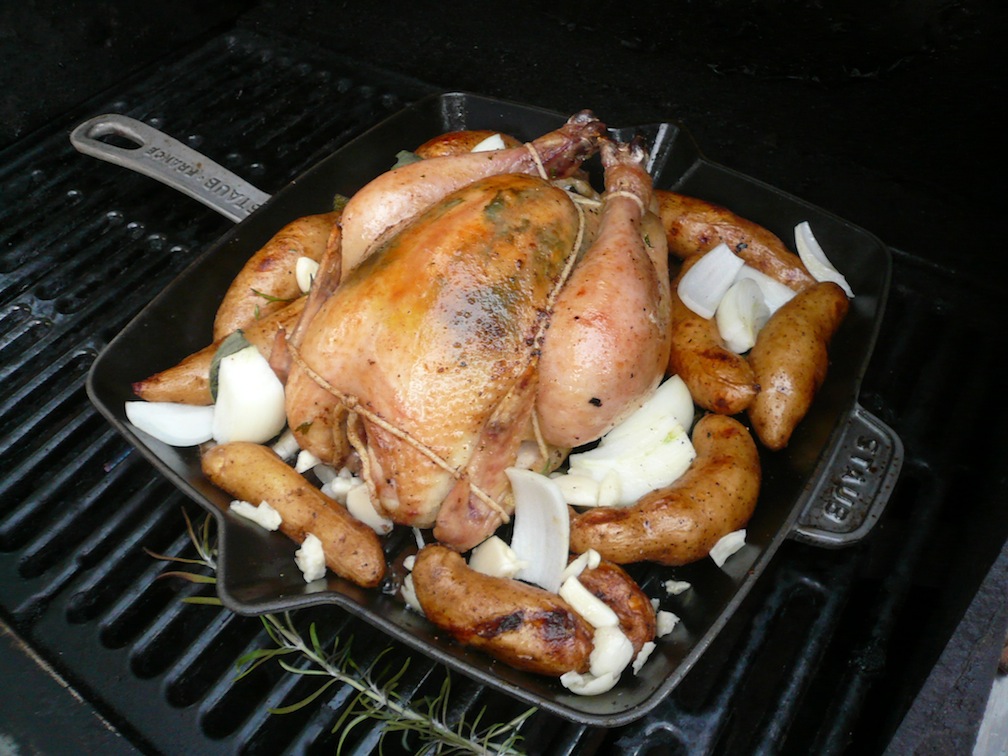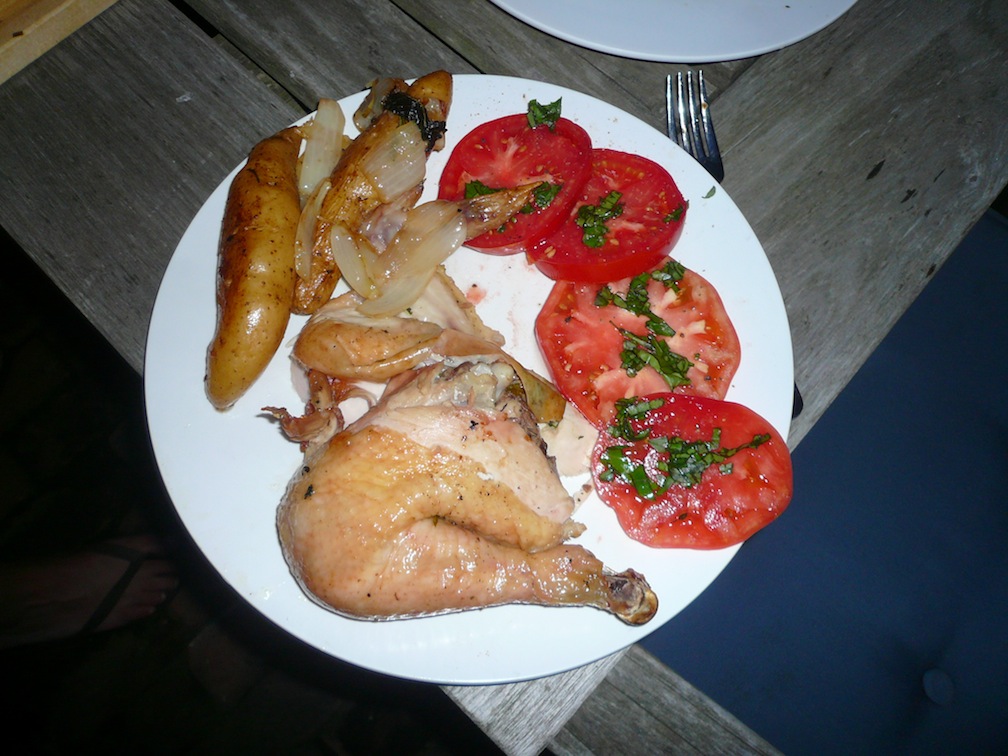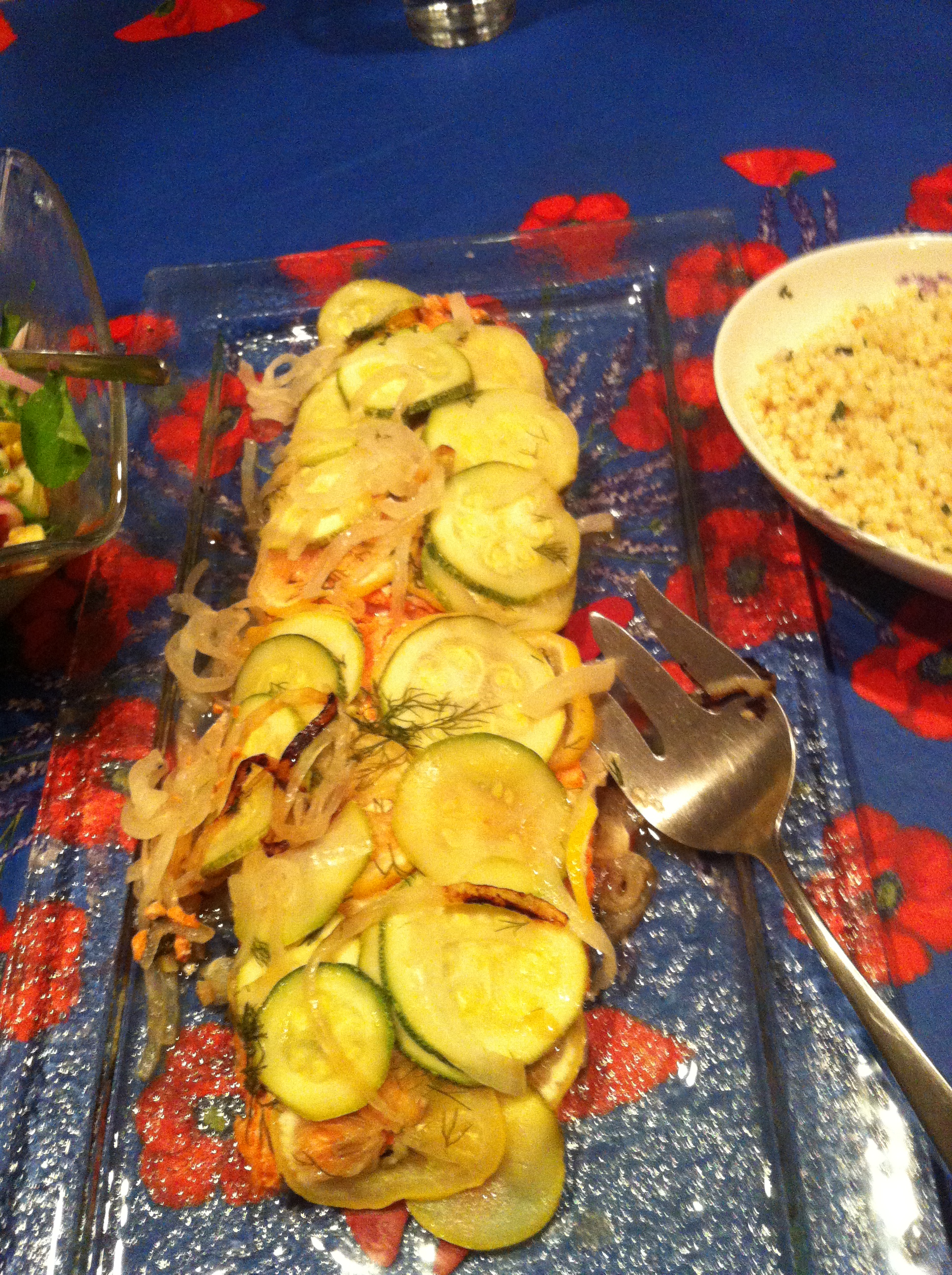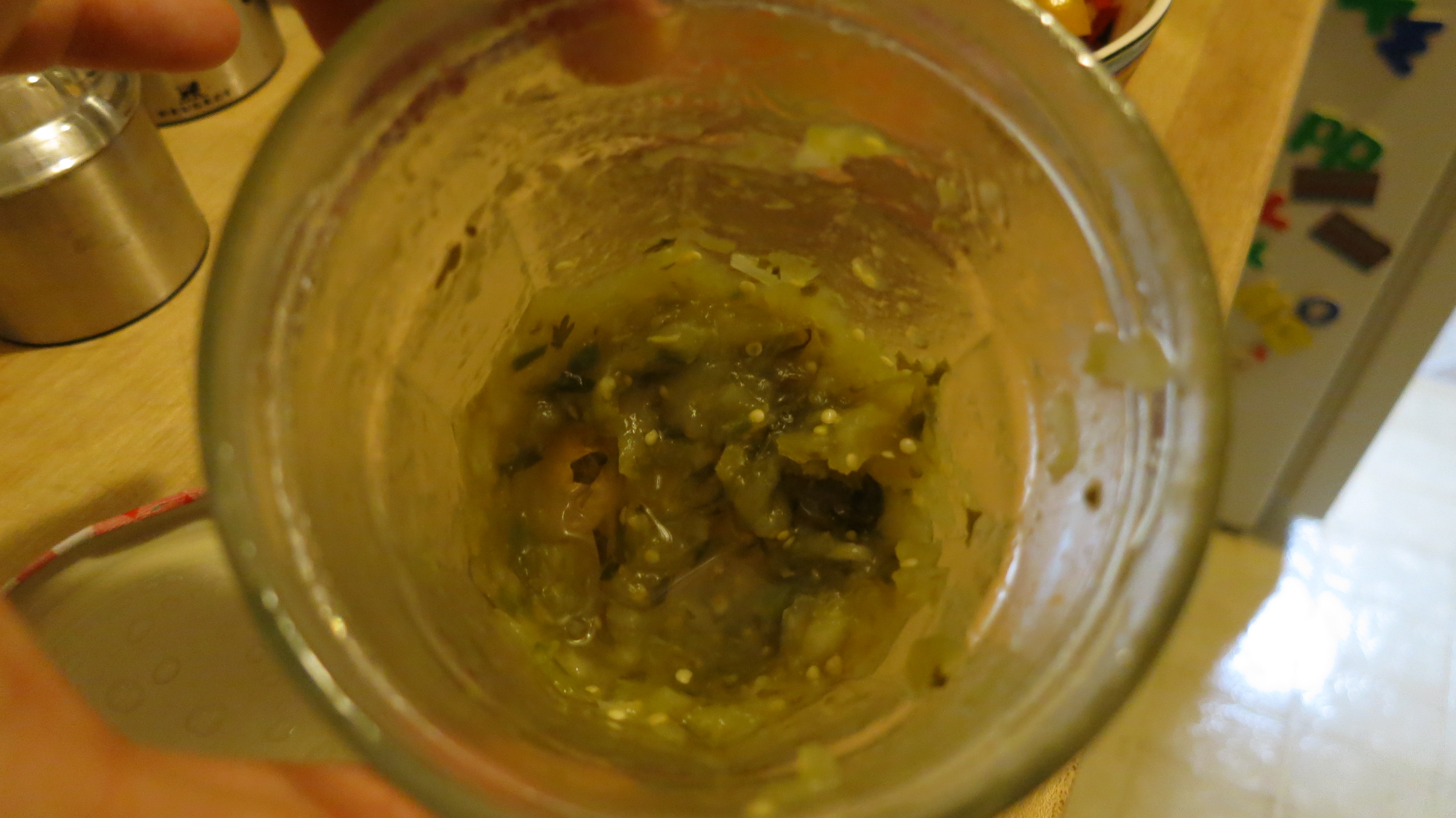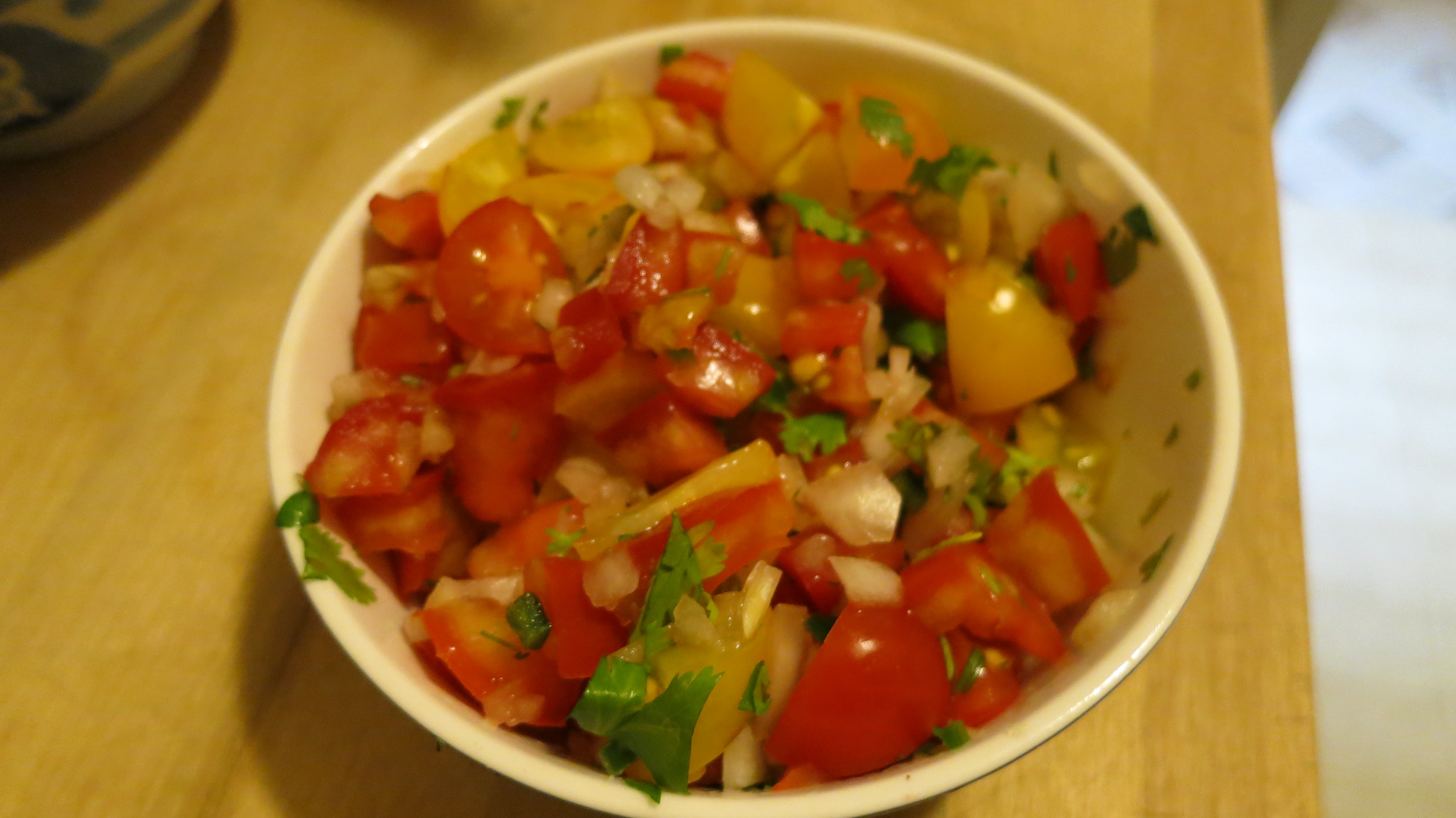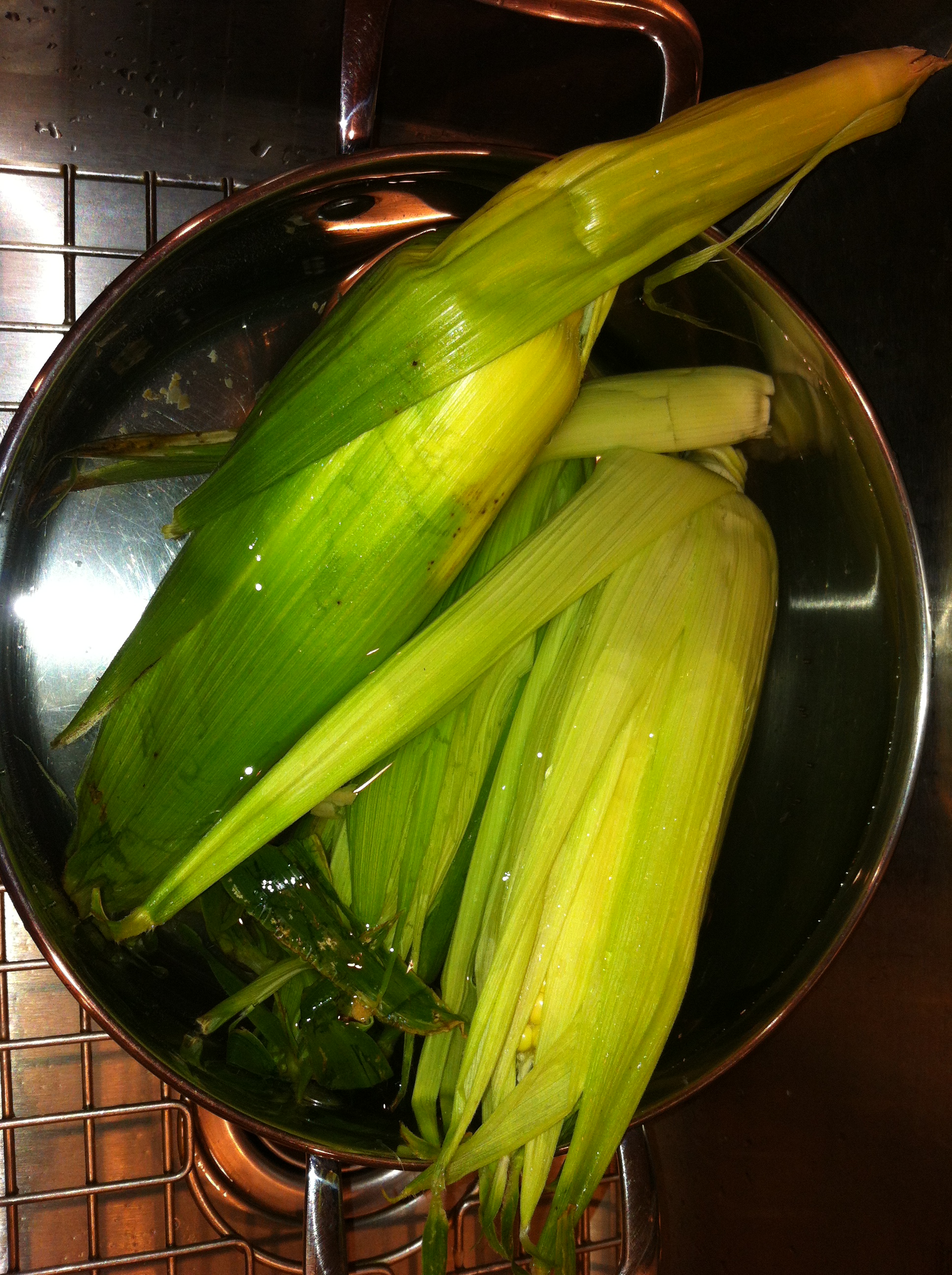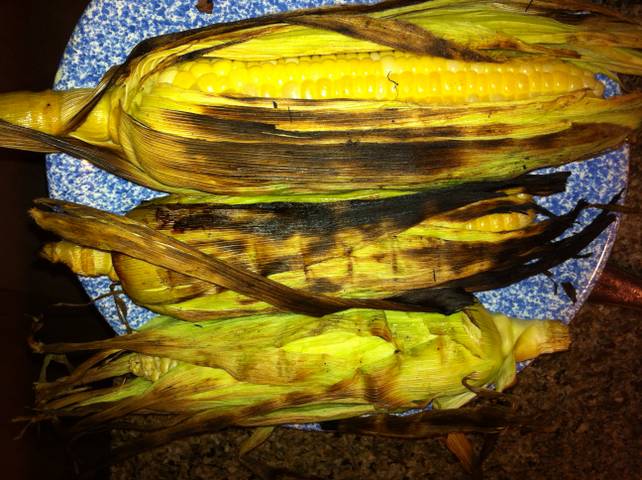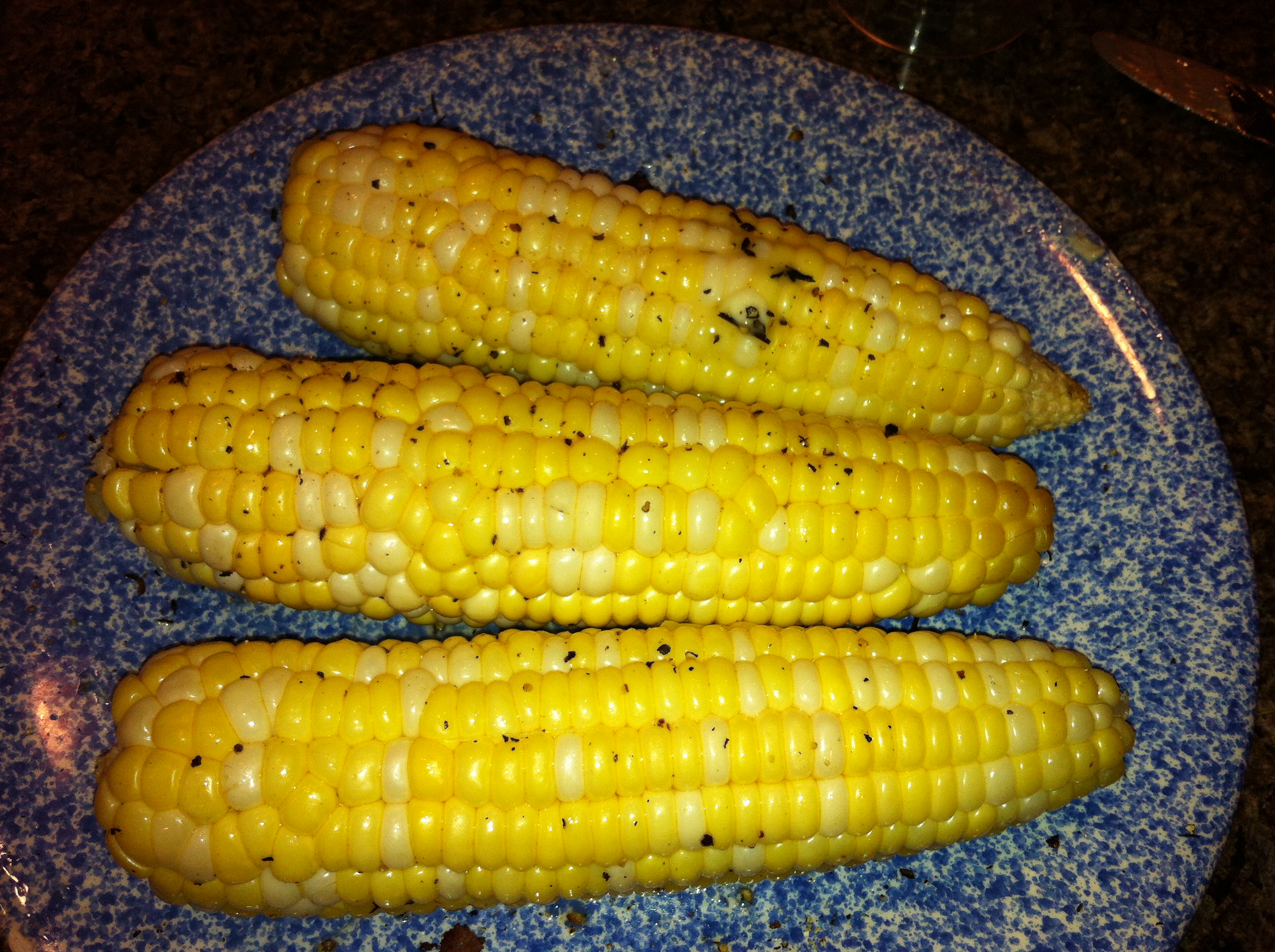Such a bountiful CSA Pick-up on Saturday…Here it is on my countertop and I already stored the purple potatoes.
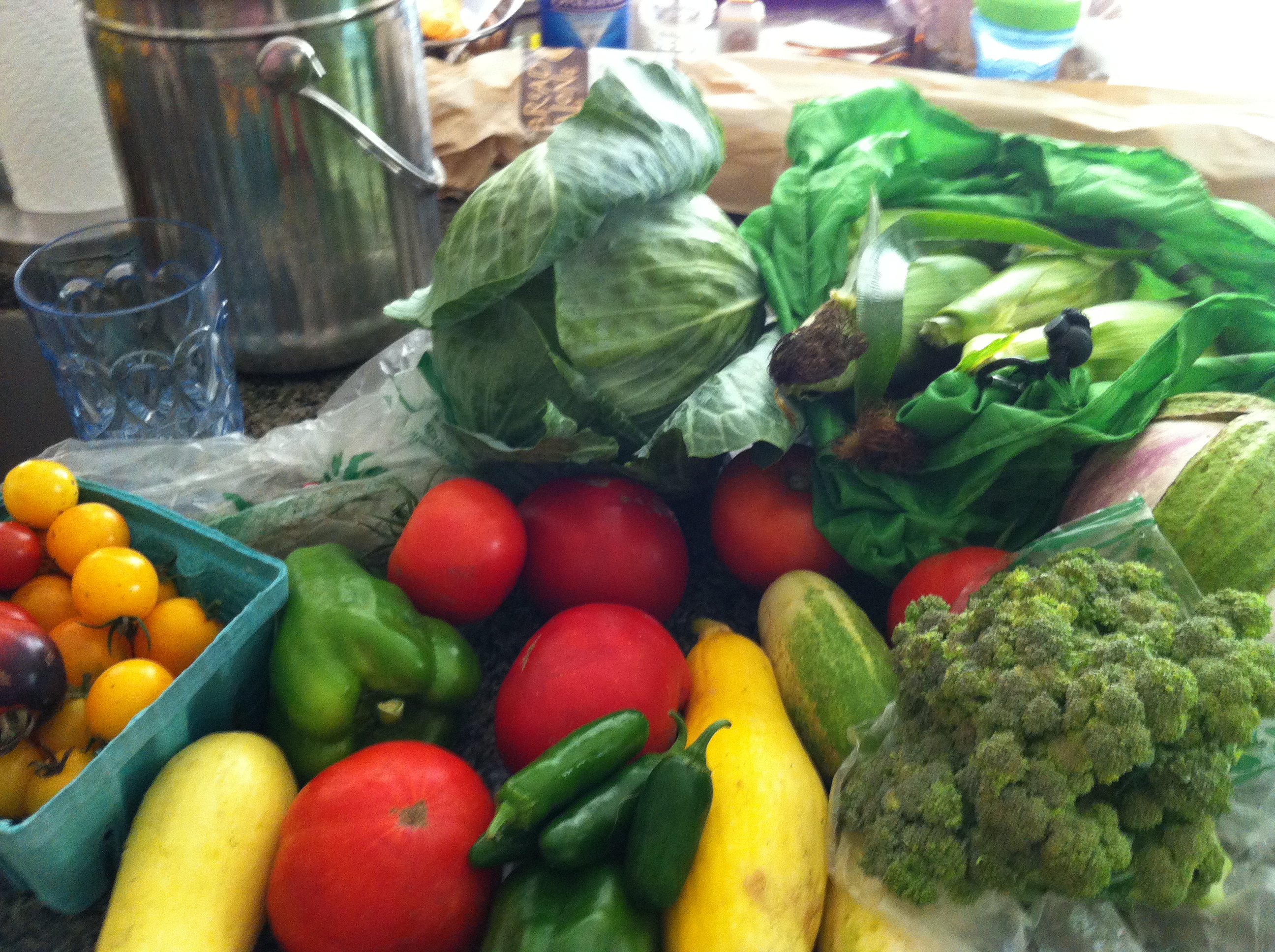
CSA Pick-up 8/4/12
I had a few recipes in mind, like Gazpacho and Zucchini Bread. I also wanted to think of something to do with the corn, since we had corn on the cob the night before, and our pick-up included 6 ears. After June graciously picked some kirby cucumbers for us, I considered a standard gazpacho, but then remembered a favorite recipe from summers past.
I’ve made this recipe for Roasted Gazpacho from Mark Bittman many times and it’s always been a success. It’s also a good way to use some vegetables like eggplant, squash, and overly ripe tomatoes in bulk that might be otherwise difficult to use up. In a nutshell, you chop up zucchini, eggplant, tomatoes, onions and garlic, toss with olive oil and roast at 400 degrees. I used yellow squash instead of green zucchini here (picture below). Either works fine – another forgiving recipe.
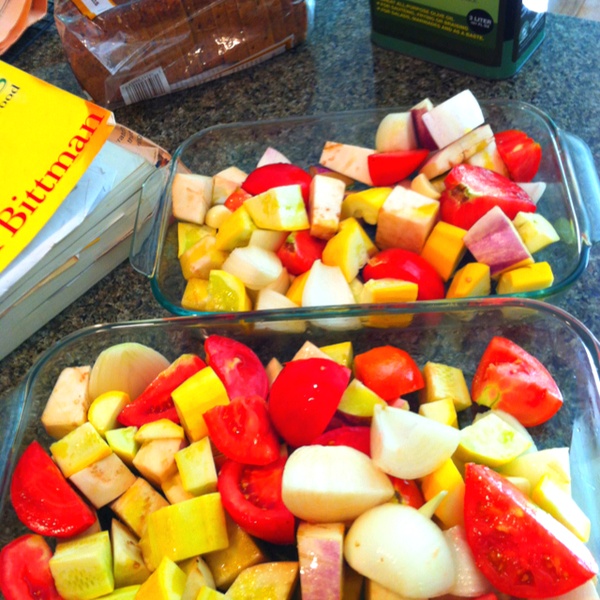
Preparation for Roasted Gazpacho: Chopped vegetables tossed in olive oil and dash of kosher salt, ready to go into oven.
Cool, purée with 1/4 cup red wine vinegar and 4 cups water. Season with salt and pepper and garnish with chopped pepper, cucumbers, and/or tomatoes to add crunch. Enjoy!
Rebecca, a blogger in Colorado, transcribed the recipe and included a pic, and funnily enough, her final product looks nothing like mine.
I also made 2 loaves of yummy Orange Zucchini bread.
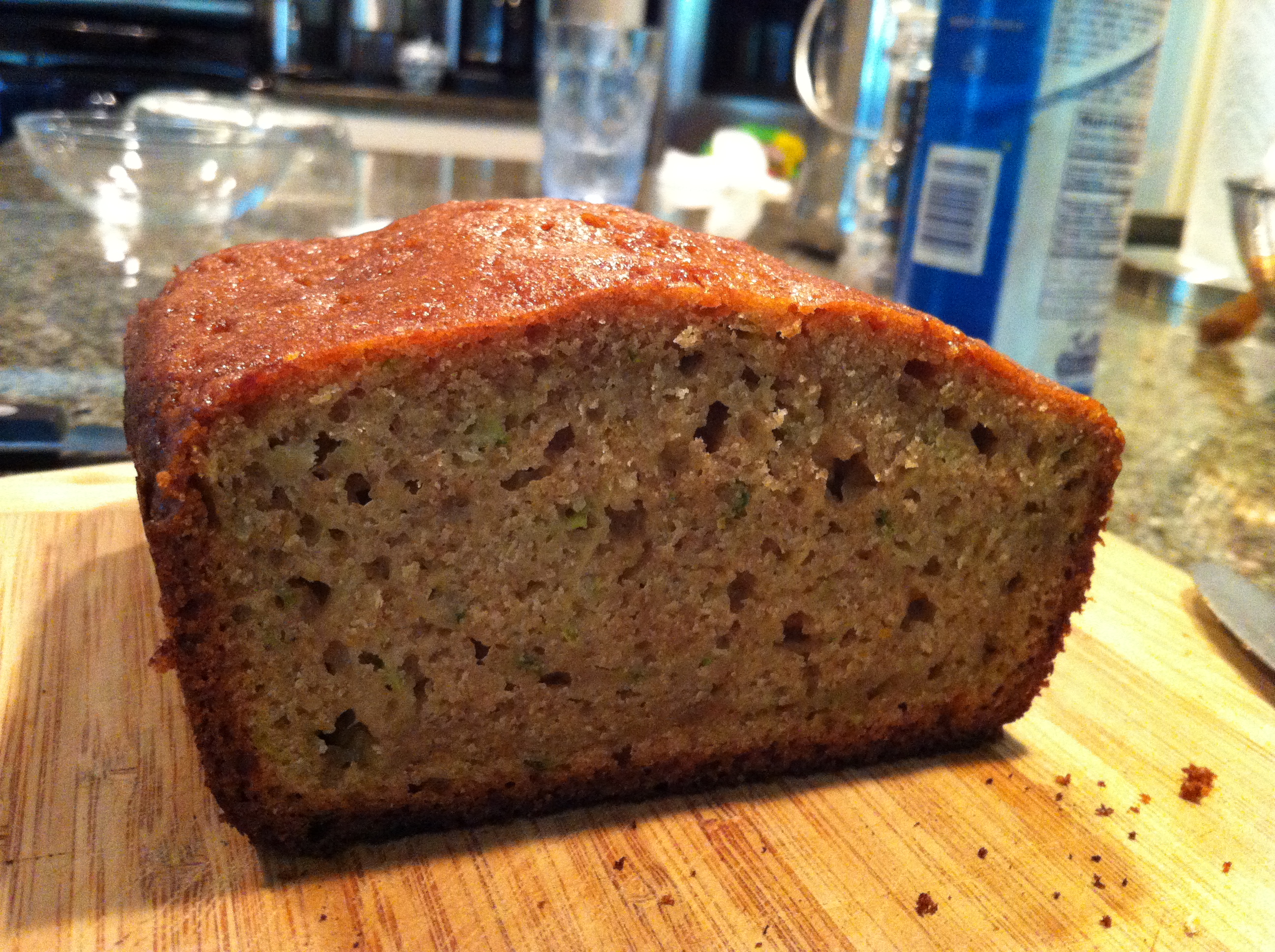
Orange Zucchini Bread
Our friend Nash passed along the recipe and it was the first time I tried this variation on the classic zucchini bread. The orange rind and juice add a nice touch – slight tartness and interesting accent of flavor. You can also use less white sugar since the orange juice adds natural sweetness than with a traditional recipe (usually calls for 2 cups of sugar).
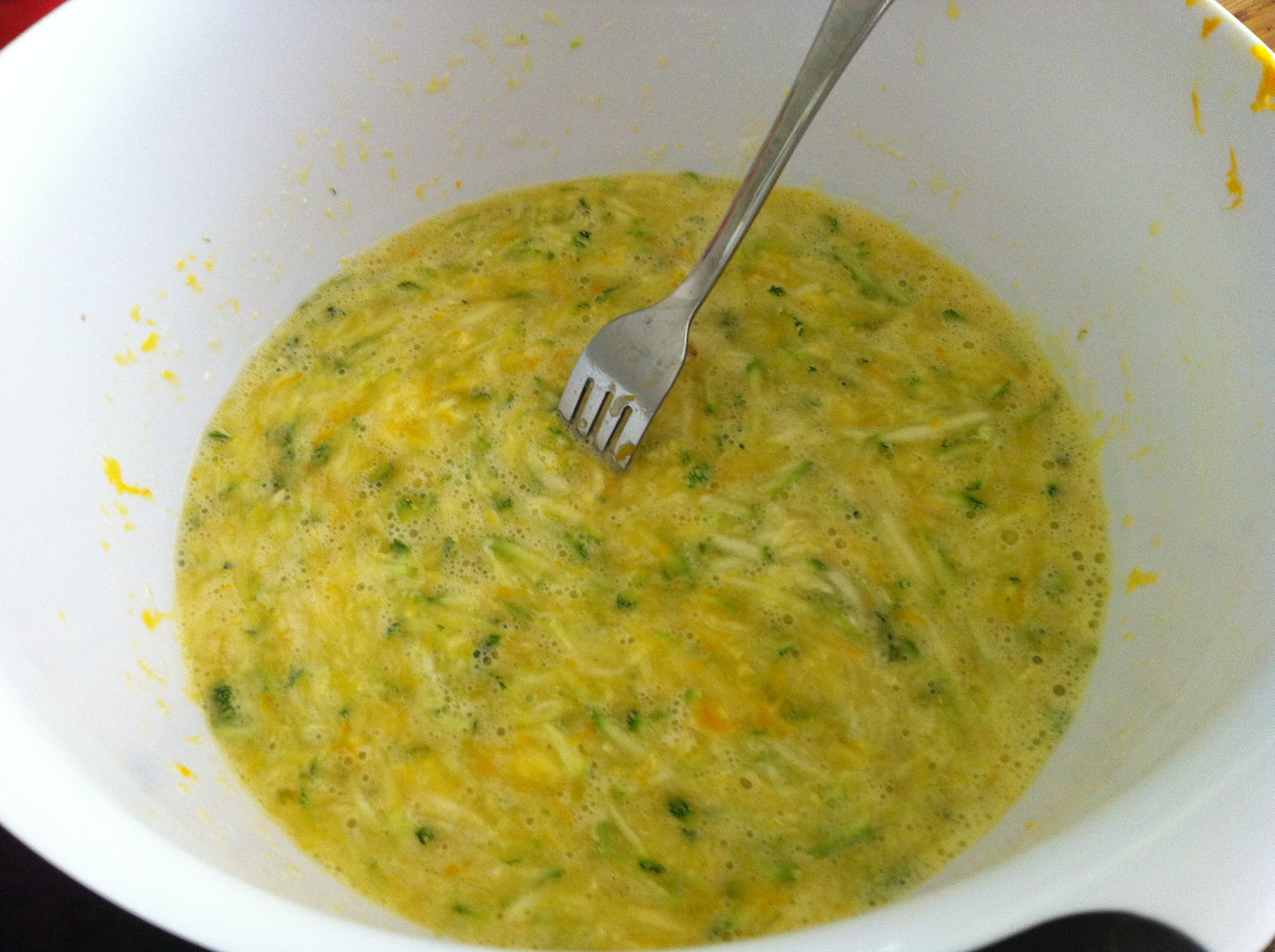
Zucchini Orange Bread batter
Here is the recipe I followed, similar to the Cooks.com recipe I linked to above:
Orange Zucchini Bread
1/2 c. canolaoil
1 1/2 c. sugar
3 eggs
2 tsp. vanilla
3 c. flour [I used 1 cup whole wheat, 2 cups all-purpose]
1 tsp. baking soda
1 tsp. baking powder
1 tsp. salt
1/2 c. orange juice
2 tsp. grated orange rind
2 c. grated zucchini
Instructions:
Mix all dry ingredients and set aside. Then mix the rest of the ingredients and cream well. Add the dry ingredients and mix well. Grease 2 bread pans and bake at 375 degrees for 50-60 minutes. You can add 1/2 cup chopped walnuts to batter as well.
Stay tuned for a great recipe for Sauteed Corn and Herbs…
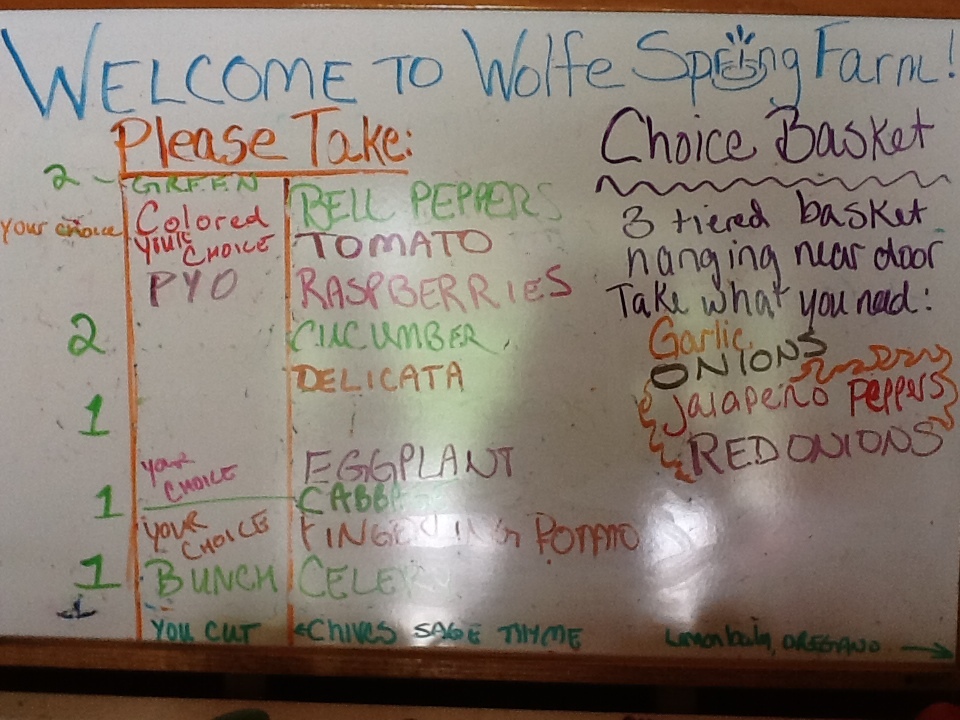

![IMG_0133[1]](http://www.adventuresineatingandeverythingafter.com/wp-content/uploads/2012/09/img_01331.jpg)
